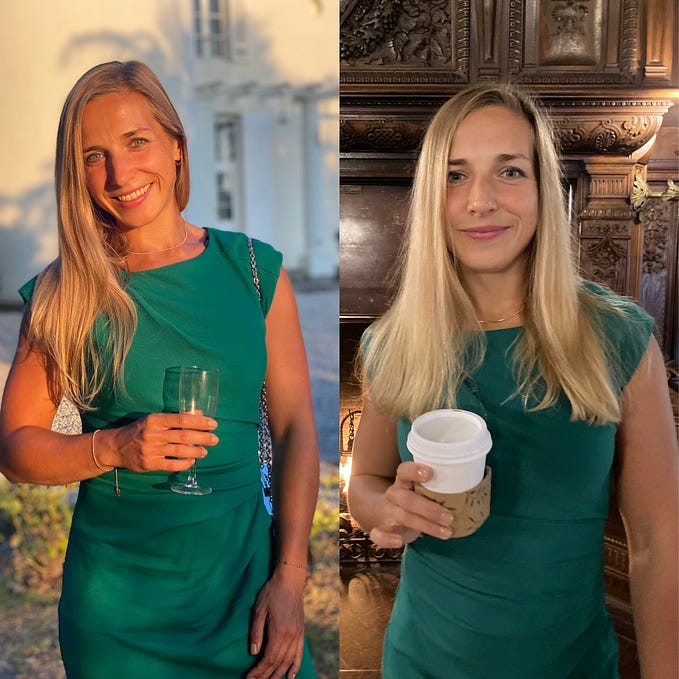Celebrate National Estuaries Week (Sep. 17–24)
Working to restore, conserve, and protect estuary habitat to benefit fish, wildlife, and people
Washington is home to nearly 2,700 miles of coastline and estuaries, which are an important part of our culture and our natural heritage. Along the coast, estuaries are centers of activity! This is where freshwater rivers meet the saltwater of the ocean, providing rich food resources and creating the perfect place to support a wide diversity of plants and animals. Estuaries are also often a popular place to build our communities due to their importance as transportation hubs and because they are locations of great beauty.
National Estuaries Week starts tomorrow, Sept. 17, which gives us a great opportunity to celebrate and appreciate the value of our Washington estuaries!

Here at the Washington Department of Fish and Wildlife (WDFW), we work every day to restore, conserve, and protect estuary habitat through a variety of programs and partnerships. From sharing what we know about estuaries, to maintaining estuaries and then helping you get out there and enjoy our public lands, we are happy to do our part.
In celebration of National Estuary Week, we are sharing some highlights about what an estuary is, why protection and restoration are key goals for Washington’s estuaries, and some of WDFW’s conservation actions. If you continue to the end of the blog, you will find some ways you too can get involved.
What is an estuary?
Estuaries are bodies of water where the freshwater of rivers meets the saltwater of the ocean or Puget Sound, creating an environment that is a mixture of saltwater and freshwater. Throughout history, estuaries have been vitally important for Native American cultures, and they are home to more than two-thirds of Washington’s commercially important fish and shellfish. Many species either live their whole lives or depend upon estuaries for a variety of life-stages.
Washington’s complex shoreline, combined with countless rivers and streams, have created hundreds of estuaries in the Puget Sound and the outer coast. Along the 155 mile long outer coast, the most prominent estuaries include Grays Harbor, Willapa Bay, and the Columbia River. The Puget Sound alone is composed of 2,500 miles of shoreline and numerous rivers, creating many opportunities for estuaries to form.
Estuaries are home to a variety of unique habitats, supporting many waterfowl, shorebirds, fish, and invertebrates for all or part of their life cycle.
Here are some of the highlights:
- Some native plant species are primarily found in branched channels that drain salt and brackish marshes and tidal flats, such as salt grass, sea milkwort, jaumea, pickleweed, sea blight, and arrow grass.
- In intertidal and subtidal zones, channels may be lined with eelgrass, the home to invertebrates who serve as an important food resource for Brant geese, as well as for commercially important species such as Dungeness crab and red rock crab, Pacific herring, salmonids, shrimp, and flatfishes.
- Salt and brackish marshes and intertidal mudflats are important habitats used by insect larvae, amphipods (shrimp-like animals), polychaetes (marine worms), snails, and other invertebrates. These species are prey for numerous fish and wildlife, including waterfowl, shorebirds, herons, raccoons, otter, mink, salmon, and steelhead.
- The mixture of freshwater and saltwater in estuaries also allows juvenile anadromous salmonids to acclimate to the changing environment during their migration from their freshwater natal streams to the sea where they will spend most of their adult life.

Are estuaries in trouble?
There are a number of threats to Washington’s estuaries — invasive species, development, and sea level rise are the three most significant.
Invasive species
Invasive species are a serious threat to the habitat and thus species of Washington’s estuaries. Non-native European green crab populations are on the rise along the nearshore. They prey on shore crab, clams, and small oysters. The tiny non-native New Zealand mudsnail population is also on the rise in the lower Columbia. They feed on algae, sediment, plant and animal detritus, displacing native snails and insects. Spartina, an invasive plant, has become established in estuaries, raising tidal elevations, displacing eelgrass and native marsh plants, and reducing habitat for migratory waterfowl, invertebrates, and possibly fish.



Development
One of the biggest causes of marine shoreline habitat loss over the last 150 years has been urban, residential, and agricultural development. Approximately 70–80% of historic estuary habitat has been lost to diking, drainage, and filling in Puget Sound and 70% in lower Columbia. Many of Puget Sound’s largest cities, such as Seattle, Tacoma, and Everett, are located on filled estuary. Additionally, shoreline armoring occurs over 27% of Puget Sound.

Sea level rise
Sea level rise threatens the future of what estuary habitat remains. As the sea level rises, tidal salt marshes will be completely submerged causing declines in vegetation unless they migrate inwards through sediment accumulation. Additionally, there will be increased wave action and higher water temperatures.

What is WDFW doing to help?
WDFW is dedicated to protecting and restoring all nearshore habitat and environmental processes that are important to the species of greatest concern. From leading projects on the Department’s lands to providing incentives for shoreline landowners, WDFW provides technical expertise, project assistance, and funding opportunities to support and restore marine shoreline habitats.
Protect
One way to provide protection for fish and wildlife species is to track information about key species, their threats, and where it is most important to protect them. The Department’s Priority Habitat and Species Program is our way of transferring fish and wildlife information from our resource experts to local governments, landowners, and others who work to protect habitat. The relatively undisturbed nearshore estuaries of Washington’s outer coast including Grays Harbor, Willapa Bay, and the mouth of the Columbia River are identified as priority habitats for conservation and management. This information is used by cities and counties to implement and update land use plans and development regulations under the Growth Management Act and Shoreline Management Act.
The Department also provide this important information in our State Wildlife Action Plan, which identifies “Habitats of Greatest Conservation Need”. A habitat of greatest conservation need is defined as an ecological system and community type that is essential to the conservation of Species of Greatest Conservation Need in Washington. The Temperate Pacific Tidal Salt/Brackish Marsh, which describes estuaries, are one of the identified ecosystems.
Another way we accomplish protection is by investing in and managing State Wildlife Areas in estuary habitats to protect the habitat in perpetuity and share it with the public. Examples include: Chimacum Unit, Chinook Unit, Nooksak Unit, Oyhut Unit, Skagit Headquarters Unit, North Willapa Bay Unit, Spencer Island Unit, and Union River Unit.
Restore
WDFW is dedicated to protecting and restoring all nearshore habitat and environmental processes. Some examples of completed projects include:
Leque Island: Leque Island, located between Port Susan and Skagit bays, was once entirely salt marsh. In the late 1800s, early non-Indigenous people built dikes around the perimeter of the island to convert the area to farmland and homesteads.
The Leque Island Unit is part of the Skagit Wildlife Area. WDFW began acquiring properties on Leque Island in 1974, and now manages the entire island. With the help of Ducks Unlimited, we removed 2.4 miles of levee on the Leque Island Unit to restore 250 acres of tidal marsh habitat in the Stillaguamish River watershed in 2019. This year, we removed an additional 0.6 miles of levee to restore an additional 26 acres.
This habitat is used by juvenile Chinook salmon as they transition from fresh to saltwater, as well as shorebirds, waterfowl, and many other species. Because Puget Sound’s Southern Resident killer whales rely upon Chinook salmon for food, the project also closely aligns with orca recovery efforts.
Construction work began in early August 2022 on Leque Island north of Highway 532 and is expected to be finished in early fall. Crews will remove 0.6 miles of dike, connect 8 new channels, and plug ditches to improve access for salmon.
Learn more about the Leque Island project.
Chinook Estuary Restoration: In Baker Bay, near the mouth of the Columbia River Estuary, WDFW manages 1,000 acres of the 1,500-acre Chinook estuary as part of the Johns River Wildlife Area. After upgrading the tide gates in 2007, we worked with local landowners to manage them for optimal fish passage while still protecting private properties from flooding. Currently, the tide gates are partially open most of the winter and closed completely only when king tides and large storm events coincide. The goal is to have the tide gates completely raised by March, when juvenile salmon begin to use the habitat.
Through genetic sampling, we identified that in addition to Lower Columbia fall Chinook, Willamette spring Chinook and Middle Columbia fall Chinook were also using the restored habitat.

Habitat restoration activities:
- Over 200 acres acquired to expand restoration efforts
- 11 relict channel crossings were removed and fill material used to create mounds for floodplain complexity
- Over 7,000 feet of drainage ditches filled
- 16 acres of historic wetlands restored
- 3,300 feet of natural tidal channel restored by removing derelict farm road crossing and widening the channel
- Replanted 10 acres
WDFW also continues to enhance the estuary habitat by planting native species, preserving historic estuary lands, and working with the community to find more flexibility with tide gate management.
Programs to Support Other Work
Through a number of programs and partnerships, the Department provides resources and/or technical assistance to other organizations to restore, conserve, and protect estuary habitat throughout Washington.

Groundbreaking ceremony for the Kilisut Harbor restoration project in August 2019. The project benefits many species, including salmon, shorebirds, waterfowl, shellfish, and eelgrass, while also providing transportation between Indian and Marrowstone Islands.
Estuary and Salmon Restoration Program (ESRP): The Estuary and Salmon Restoration Program provides funding and technical assistance for nearshore restoration and protection efforts in Puget Sound.
Shore Friendly Grant Program: Shore Friendly is a brand developed to encourage forgoing or removing shoreline armor, incentivizing landowners and communities to inspire behavior change.
Puget Sound Habitat Strategic Initiative: The Habitat Strategic Initiative, co-led by WDFW and DNR, facilitates and empowers strategic, collaborative recovery of Puget Sound.
Puget Sound Nearshore Ecosystem Restoration Project: This project is a long-term effort to identify significant ecosystem problems in the Puget Sound nearshore, evaluate potential solutions, and restore and preserve habitat.
We provide assistance and support for Regional Fisheries Enhancement Groups and the coastal Marine Resource Councils, who are our partners in achieving conservation and restoration goals. We also often serve on technical advisory groups for lead entities and other organizations working on salmon recovery.
What can I do to help?
- Volunteer with WDFW, a conservation district, a regional salmon enhancement group, or other organization.
- Learn more with Puget Sound Estuarium or Lower Columbia Estuary Partnership.
- If you are a landowner along an estuary, get involved with the Voluntary Stewardship Program or reach out to your local habitat biologist or private lands biologist for ideas on how to conserve, protect, and restore marine shorelines in your area.
- Support public lands by buying a Discover Pass.
- Share your photos and observations of marine shoreline wildlife species to help us monitor wildlife populations and habitat.









